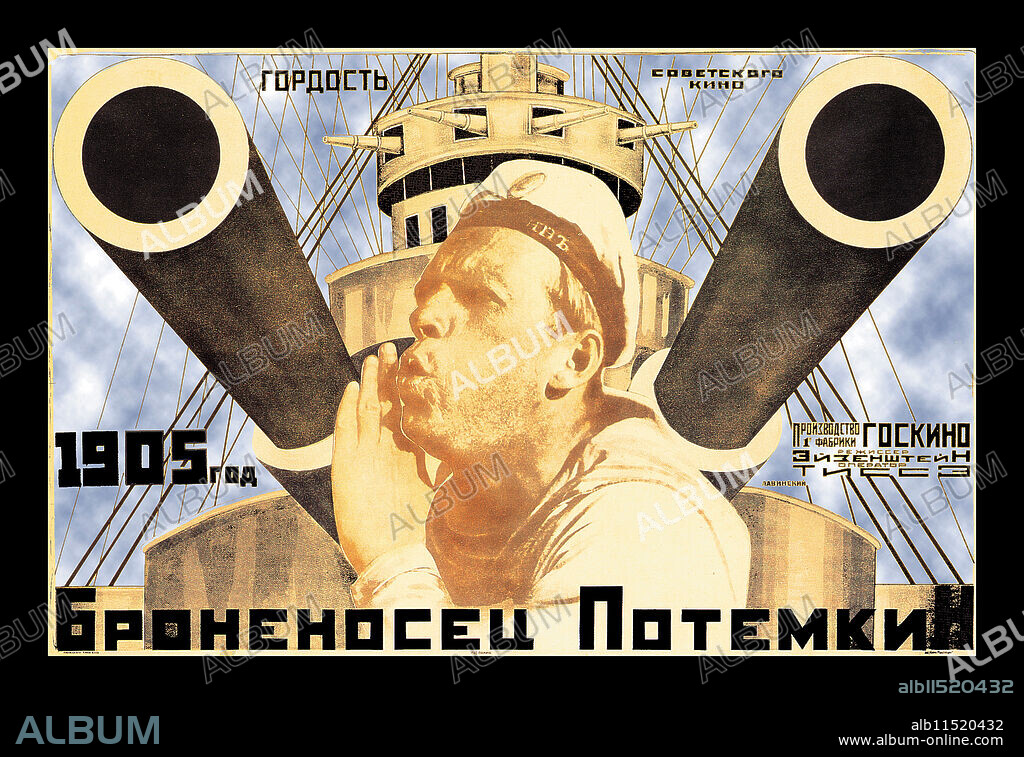alb11520432
ANTON LAVINSKY. Battleship Potemkin 1905

|
Add to another lightbox |
|
Add to another lightbox |



Buy this image.
Select the use:

Author:
Title:
Battleship Potemkin 1905
Caption:
Soviet poster for the film "Battleship Potemkin" by Sergei Eisenstein in 1925. The film of the famed Odessa revolt has been one of the landmarks of cinema since its release. Commissioned by the government to commemorate the failed uprising of 1905, it's without stars or even actors in the usual sense, exemplifying the collectivism it celebrates. The Battleship Potemkin has just returned from the war with Japan, its crew near mutiny because of brutal treatment and bad rations. When they're served maggot-infested meat one morning, the sailors finally rebel. One of the sailors, Vakulinchuk (Aleksandr Antonov), dissuades the officers from firing upon the mutineers, and they join the rest of the crew in revolt. Hearing of the mutiny, the people of Odessa send supplies to express their solidarity with the crew and gather en masse to mourn a slain sailor. The czar's troops arrive to dispel the crowd. In perhaps the most famous sequence in film history, the director rhymically intercuts shots of the troops marching machinelike down the Odessa steps with shots of innocent citizens being killed and wounded, in a brilliant embodiment of the director's theories of montage. The film's vision of tyranny and rebellion remain as powerful today as it was in 1925. Art by cubist master Anton Lavinsky (Russian, 1893–1968)
Credit:
Album / The Pierce Archive
Releases:
Model: No - Property: No
Rights questions?
Rights questions?
Image size:
3200 x 2200 px | 20.1 MB
Print size:
27.1 x 18.6 cm | 10.7 x 7.3 in (300 dpi)
Keywords:
ANTON LAVINSKY • AVANT GARDE • BATTLESHIP POTEMKIN • BATTLESHIP • FILM • FILMMAKER • GUNS • MOVIE • POTEMKIN • RUSIA • RUSSIA / USSR • RUSSIA • RUSSIAN AVANT GARDE • SOVIET • WARSHIP
 Pinterest
Pinterest Twitter
Twitter Facebook
Facebook Copy link
Copy link Email
Email
